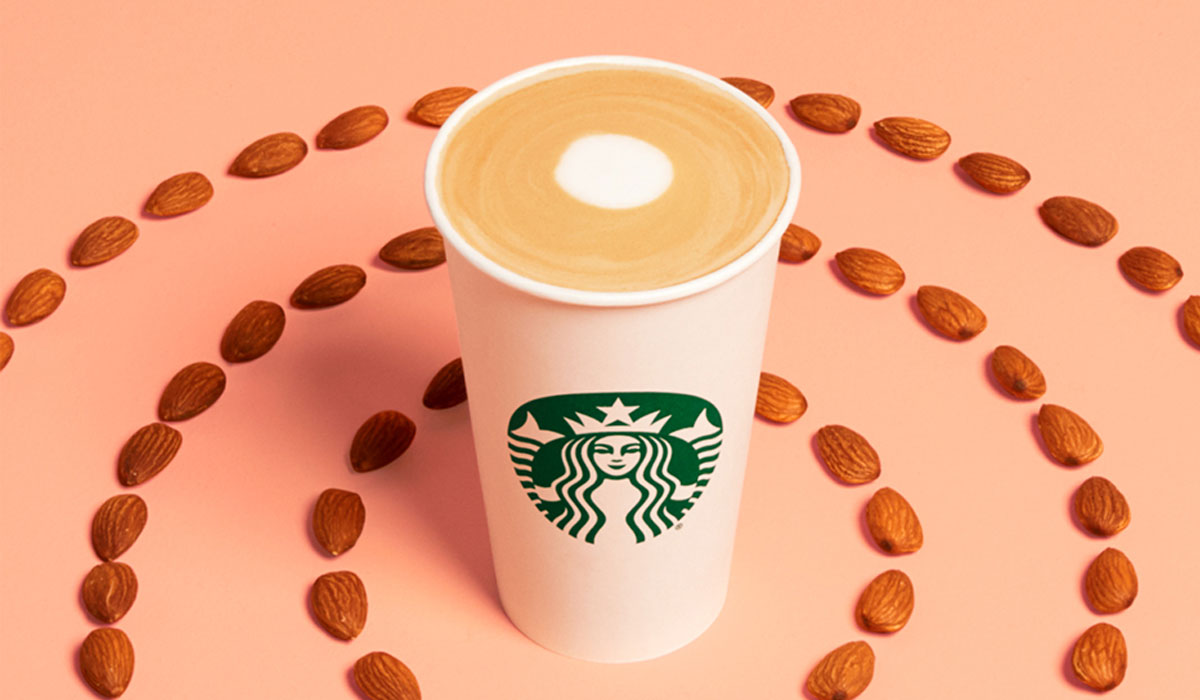Starbucks announced a long-term plan Tuesday to give more to the environment than it takes, a part of which includes more plant-based items on the menu.
The company listed five strategies to become “resource positive” by 2030, with the first being the expansion of plant-based options and the move toward a more environmentally friendly menu. The objective comes a couple weeks after the regional introduction of the new non-dairy, plant-based Oatmilk Honey Latte that arrived in the Midwest.
The other four initiatives include shifting toward reusable packaging and away from single-use, investing in reforestation, forest conservation, and water replenishment, finding better ways to manage waste, and developing an eco-friendly supply chain through store designs, manufacturing, and delivery.
“Now, it’s time to create a new, bold, broad aspiration—and it’s work that will require visionary thinking, new ways of working, investment of resources, and urgent action,” Starbucks CEO Kevin Johnson said in a public letter. “In that sense, I see today as a milestone for our business as we declare our concern about our planet’s future and commit to do more.”
As part of the commitment, Starbucks is preliminarily aiming to cut carbon emissions and waste sent to landfills by 50 percent and to conserve 50 percent of the water used for operations and production. Johnson said the goals will be formalized in 2021, which will mark the company’s 50th anniversary. In the next year, Starbucks will research consumer behavior and investigate the best ways to encourage customers to use reusable containers.
The task looms large as the coffee chain has more than 31,000 stores worldwide with roughly 400,000 employees serving 100 million customers each week. According to an environmental baseline report, Starbucks as a whole emitted 16 million tons of greenhouse gases in 2018, used one billion cubic meters of water, and emitted 868 kilo tons of waste.
However, Starbucks isn’t beginning the aggressive plan without a solid foundation in sustainability. It dates back as far as 1971 when the company sold whole bean coffee, tea, and spices, and as recently as this year with the phasing out of plastic straws across Asian markets. The brand has promoted environmental consciousness through the Starbucks FoodShare program, NextGen Cup Challenge, Conservational International, Leadership in Energy and Environmental Design (L.E.E.D.) stores, and Coffee and Farmer Equity (C.A.F.E.) practices. In addition, more than 18,000 of its workers have participated in an online “Greener Apron” course on sustainability and environmental stewardship in the past two years.
“This aspiration is grounded in Starbucks mission,” Johnson said. “By embracing a longer-term economic, equitable and planetary value for our company, we will create greater value for all stakeholders.”
Since 2001, Starbucks has published an annual Global Social Impact Report—one of the longest-running and transparent reporting commitments in the public restaurant sector.











